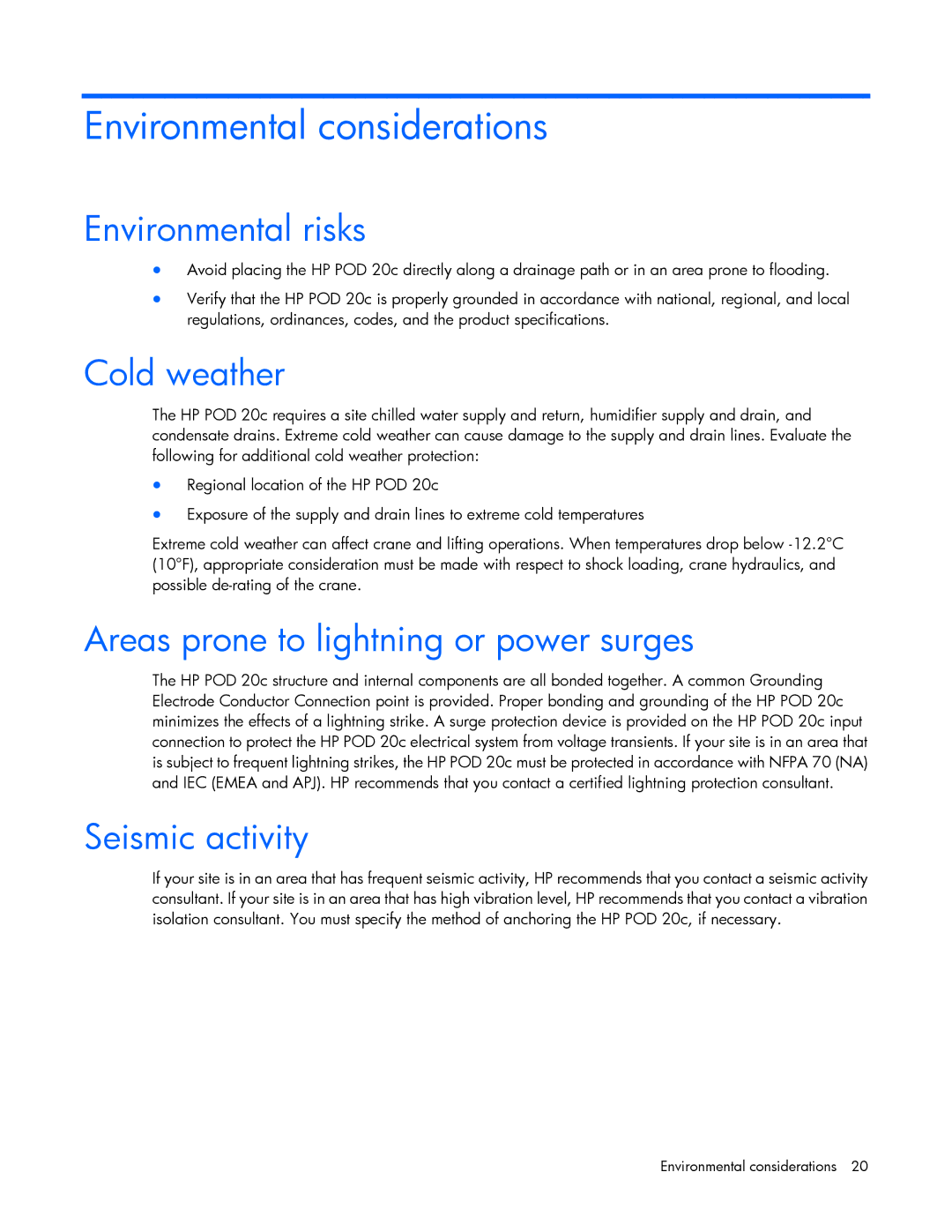Environmental considerations
Environmental risks
•Avoid placing the HP POD 20c directly along a drainage path or in an area prone to flooding.
•Verify that the HP POD 20c is properly grounded in accordance with national, regional, and local regulations, ordinances, codes, and the product specifications.
Cold weather
The HP POD 20c requires a site chilled water supply and return, humidifier supply and drain, and condensate drains. Extreme cold weather can cause damage to the supply and drain lines. Evaluate the following for additional cold weather protection:
•Regional location of the HP POD 20c
•Exposure of the supply and drain lines to extreme cold temperatures
Extreme cold weather can affect crane and lifting operations. When temperatures drop below
Areas prone to lightning or power surges
The HP POD 20c structure and internal components are all bonded together. A common Grounding Electrode Conductor Connection point is provided. Proper bonding and grounding of the HP POD 20c minimizes the effects of a lightning strike. A surge protection device is provided on the HP POD 20c input connection to protect the HP POD 20c electrical system from voltage transients. If your site is in an area that is subject to frequent lightning strikes, the HP POD 20c must be protected in accordance with NFPA 70 (NA) and IEC (EMEA and APJ). HP recommends that you contact a certified lightning protection consultant.
Seismic activity
If your site is in an area that has frequent seismic activity, HP recommends that you contact a seismic activity consultant. If your site is in an area that has high vibration level, HP recommends that you contact a vibration isolation consultant. You must specify the method of anchoring the HP POD 20c, if necessary.
Environmental considerations 20
